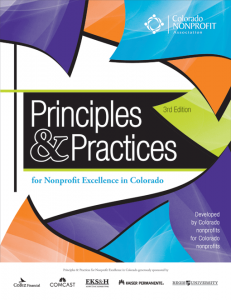This is the fourth post in a series about Colorado nonprofit corporate governance issues. Click here for the most recent post on differences between articles and bylaws, here for an earlier post on membership issues, and here for the initial post on proxy voting.
When it comes to establishing a process for conducting board or member meetings, many nonprofits insert a provision in their bylaws requiring adherence to Robert’s Rules of Order without giving it much thought. Following Robert’s Rules (or any parliamentary procedure, for that matter) can help ensure that meetings are conducted in an orderly and efficient manner, and that the minority position is heard and considered. However, following parliamentary procedures is not required under Colorado nonprofit corporate law—and may not be the right fit for many organizations.
Here is a breakdown of some key points regarding process:
Compliance with Bylaws. As mentioned, Colorado corporate law does not require the use of parliamentary procedure. However, if an organization’s bylaws require the use of a specific procedure, then an organization needs to comply. Here is the danger with simply stating that Robert’s Rules will be followed, but then not really adhering to that system: it is possible that noncomplying votes could be attacked as invalid action. For this reason, we typically do not include this type of requirement in our bylaws. Instead, we suggest it be left to the discretion of the board, or be dealt with by practice or policy. If an organization feels strongly that it wants to include such a requirement in its bylaws, we typically recommend “watering it down,” so the board is encouraged to follow the principles of Robert’s Rules when circumstances may warrant, while making it clear that failure to do so will not invalidate any corporate action.
Considering Other Options. Some nonprofits prefer to act by less formal models, like consensus and collaboration. While parliamentary procedure results in a yes-or-no vote, consensus allows for a range of responses and encourages dialogue among all parties. In a traditional consensus, one person has the power to block a decision if he or she strongly disagrees with it. If attempts to compromise fail, a majority vote may be called as a last resort. For more information on consensus voting, click here.
Providing Flexibility. The bylaws can remain silent on which process to use, which allows a board to find the process that best fits its needs and perhaps change it without needing to amend. Alternatively, the process could be addressed in separate corporate policy as well, which may be easier to amend than the bylaws, depending on the circumstances.


